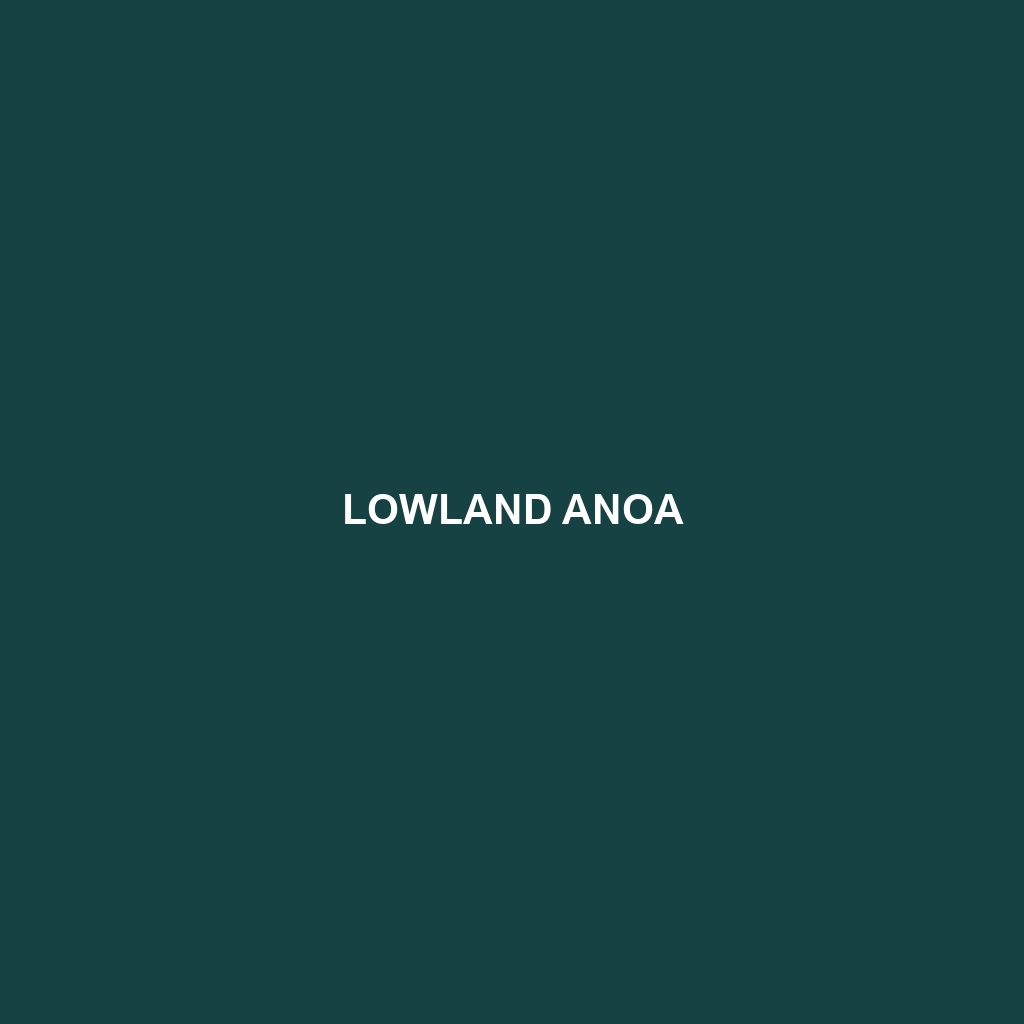Lowland Anoa (Bubalus depressicornis)
Common Name: Lowland Anoa
Scientific Name: Bubalus depressicornis
Habitat
The Lowland Anoa is primarily found in the tropical rainforests of Indonesia, particularly on the islands of Sulawesi and the surrounding smaller islands. These animals prefer lowland areas with dense vegetation and are often found in swamps, riverine forests, and primary or secondary forest regions where they can easily find shelter and food.
Physical Characteristics
Lowland Anoa are small, dwarf buffaloes that typically weigh between 150 to 300 kilograms (330 to 660 pounds) and stand about 1 meter (3.3 feet) tall at the shoulder. They have a compact body structure with short legs and a stout build. Their fur is generally dark brown to black, often appearing lighter on the legs and underbelly. Distinctive features include small, curved horns that are present in both males and females, as well as prominent eyes which contribute to their keen sense of sight.
Behavior
Lowland Anoa are primarily nocturnal and crepuscular, exhibiting most of their activity during dawn and dusk. They are known to be solitary or found in small groups, typically consisting of a mother and her young. Their shy nature often leads them to seek refuge in dense underbrush when danger approaches. They are also known for their excellent swimming abilities, which they utilize to navigate marshy habitats and evade predators.
Diet
The Lowland Anoa are herbivores, primarily browsing on a variety of shrubs, grasses, and leaves. Their diet consists mainly of forbs and aquatic plants often found in their swampy habitats. Due to their specialized feeding habits, they play a significant role in maintaining the balance of their ecosystem by controlling plant growth and promoting biodiversity.
Reproduction
Lowland Anoa have a breeding season that varies based on environmental conditions but typically peaks during the rainy season. Gestation lasts approximately 10 to 11 months, resulting in a single offspring, known as a calf. The mother is highly protective of her young, and calves often remain with their mothers for about 18 months before becoming independent.
Conservation Status
The Lowland Anoa is currently classified as Endangered by the International Union for Conservation of Nature (IUCN). Their population is declining primarily due to habitat loss caused by deforestation, agricultural expansion, and hunting pressures. Conservation efforts are crucial to protect this unique species and its natural habitat.
Interesting Facts
One fascinating fact about the Lowland Anoa is that it has a unique adaptation to its environment; its ability to swim aids in foraging for food in waterlogged areas. Additionally, this species is considered a “living fossil,” having remained relatively unchanged for thousands of years, which makes it an important subject for evolutionary biology studies.
Role in Ecosystem
The Lowland Anoa plays a vital role in its ecosystem as a herbivore. By grazing on various plants, they help to shape the forest structure and maintain ecological balance. Their feeding habits contribute to the dispersal of seeds, which promotes plant diversity and reinforces their habitat’s health. As prey for large predators, they also contribute to the food web dynamics.
